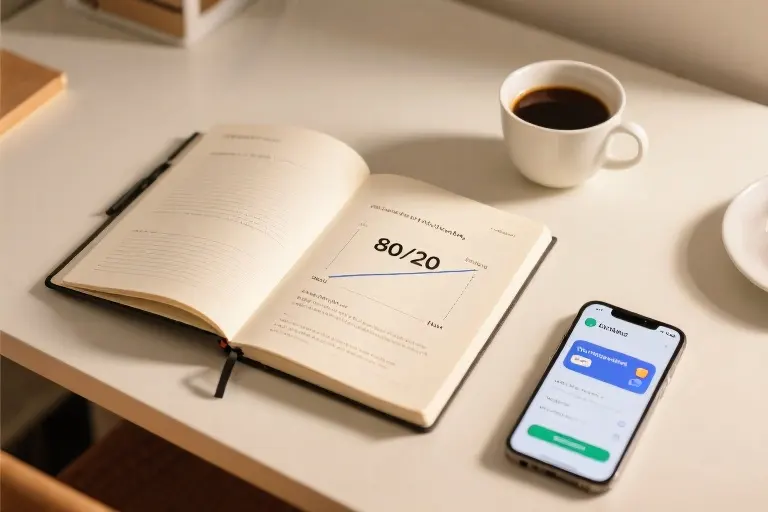The Mediterranean sun warmed the deck as our cruise ship glided between ancient shores. My friend handed me her iPhone 16 Pro to capture the moment—the Turkish coastline fading into the horizon, the laughter of our group, the perfect light dancing on the water. The camera responded with almost unsettling precision, rendering details my eyes hadn’t even registered. For a heartbeat, I felt that familiar pull—the whisper of wanting something newer, better, shinier.
I could already envision myself using this technological marvel: capturing sunsets with professional clarity, impressing friends with razor-sharp videos, joining the ranks of those who always had the latest gadget. The fantasy played out in vivid detail—until reality interrupted. I’m not a photographer. My current phone’s camera remains largely unused except for occasional snapshots of my dog doing something amusing or a recipe I want to remember. The learning curve from Android to iOS feels like asking a classical guitarist to suddenly play heavy metal. And at my age, new technology sometimes feels less like an exciting adventure and more like a complicated chore.
That moment on the deck became a miniature battle between desire and rationality. The dopamine surge of potential ownership versus the quiet voice reminding me that genuine contentment isn’t found in processor speeds or megapixels. I returned the phone with genuine admiration but no longer with desire. Two years later, I’m still using my modest Android device without regret, having discovered that the best camera—as the old saying goes—is often the one you actually use.
How many times have you stood in that same psychological space? That moment when something new calls to you with irresistible allure—a leather sofa that promises to transform your living room, shoes that swear they’ll make you walk differently through life, a kitchen gadget that vows to turn you into a gourmet chef. You acquire it, experience that initial thrill, then… nothing. Two weeks later, it’s just another object in your home. Another app on your phone. Another item in your closet. The magic dissipates so completely you can’t even remember why it seemed so essential.
This phenomenon transcends mere buyer’s remorse. It’s a fundamental mismatch between our evolutionary wiring and modern consumer culture. Our brains developed in environments of scarcity, where seeking novelty and accumulating resources provided survival advantages. That new berry patch might mean the difference between nourishment and starvation. That superior tool could increase hunting success. That social connection might offer protection against threats. Our dopamine system evolved to reward not the possession itself, but the process of discovery and acquisition—the thrill of the hunt rather than the enjoyment of the catch.
Yet here we stand in an age of unprecedented abundance, our ancient neural pathways flooded with opportunities for consumption. The same mechanisms that once helped our ancestors survive now leave us perpetually dissatisfied, chasing the next purchase, the next upgrade, the next temporary hit of novelty. We’ve become experts at acquiring but amateurs at appreciating.
The question isn’t whether we experience these impulses—we’re human, and they’re baked into our neurobiology. The real question is how we relate to them. Do we let them drive our decisions and drain our resources? Or do we acknowledge them as evolutionary artifacts—interesting psychological phenomena that don’t necessarily deserve to dictate our actions?
That day on the cruise ship, I chose the latter. Not through willpower alone, but through understanding. Recognizing that the desire for the iPhone wasn’t about the phone itself, but about the story I was telling myself—the version of me who would supposedly become more creative, more organized, more impressive with this tool in my hand. The gap between that fantasy and my actual needs was wide enough to walk through.
This is where mindful consumption begins: not with deprivation, but with clarity. Not with rejecting all desires, but with distinguishing between wants that serve our genuine wellbeing and those that merely tickle our evolutionary impulses. It’s about developing a new relationship with that internal voice that always whispers “more”—learning to listen to it with curiosity rather than obedience.
Perhaps you’ve had your own version of this moment. That split second where desire flares, then rationality gently intervenes. Or maybe you’ve experienced the other outcome—the purchase that brings temporary joy followed by lingering regret. Wherever you find yourself on this spectrum, there’s space for greater awareness. There’s opportunity to examine why we want what we want, and whether obtaining it will truly bring lasting satisfaction or merely temporary relief from the itch of wanting itself.
The journey toward intentional living isn’t about perfection. It’s about progress. About those small moments of choice where we pause between impulse and action. About recognizing that the latest model of anything—phone, car, blender—might be objectively better, but subjectively irrelevant to our actual happiness. About discovering that contentment grows not from what we acquire, but from what we already possess—including the wisdom to know the difference.
There’s something almost magnetic about the gleam of a new device—the flawless screen, the promise of better photos, the subtle but persuasive allure of an upgrade. On a cruise from Istanbul to Rome, surrounded by friends snapping crisp, vivid photos with their iPhone 16 Pros, I felt that familiar pull. My own phone, a modest Android, suddenly seemed outdated, almost embarrassingly so. For a moment, I seriously considered joining the club. But then came the questions: Would it truly improve my life? I rarely take photos. I’m comfortable with my current system. And, frankly, I’m at a stage where learning a new operating system feels more like a chore than an adventure.
That moment of hesitation—between wanting something new and recognizing its irrelevance to my actual needs—is a feeling I suspect many know all too well. How often have you stood in a store, or scrolled through a website, utterly convinced that this purchase—this sofa, these shoes, this gadget—will be the one that finally brings lasting satisfaction? And how often does that feeling fade, sometimes within days, leaving behind nothing but a credit card statement and a faint sense of foolishness?
This isn’t a rare phenomenon. Studies suggest that nearly 85% of consumers experience some form of post-purchase regret, often linked to impulsive buying driven by emotional triggers rather than practical need. We’ve all been there: caught in the glow of marketing, the thrill of novelty, the quiet promise that this time, it will be different. This time, that new object will mean something.
But it rarely does. The new phone becomes just another phone. The new sofa gathers the same dust as the old one. The special shoes lose their shine after a few wears. This rapid fading of excitement isn’t a personal failing—it’s a deeply ingrained psychological and biological response. Our minds are designed to seek out and respond to change, to newness, to the potential of “more.” Yet that very wiring works against us in a world saturated with choice and abundance.
So why does this happen? Why does the thrill of acquisition evaporate so quickly, leaving us already scanning the horizon for the next source of dopamine? The answer lies at the intersection of our evolutionary history and our modern consumer environment—a story of ancient instincts colliding with contemporary excess.
The Evolutionary Hand-Me-Down: Our “More” Instinct
That moment on the cruise ship—eyeing the iPhone 16 Pro with a mix of admiration and envy—wasn’t just about a phone. It was the latest manifestation of an ancient programming that has traveled through millennia to sit in my modern brain, whispering that newer, shinier, and more is always better.
This instinct for “more” served our ancestors remarkably well. In environments where resources were scarce and unpredictable, those who were motivated to gather extra food, create better tools, or secure stronger social bonds had a clear survival advantage. This wasn’t mere greed; it was evolutionary wisdom. The individuals who felt compelled to acquire just a little more than they immediately needed were the ones who lived through harsh winters, droughts, or conflicts. Their genes—and their predisposition toward accumulation—got passed down.
Neurobiologically, this drive maps directly onto our dopamine system. Contrary to popular belief, dopamine isn’t about pleasure itself—it’s about anticipation and novelty. Our brains release dopamine most vigorously not when we actually receive a reward, but when we encounter something new or unexpected that suggests a reward might be coming. This chemical response created powerful reinforcement for our ancestors to explore new territories, try new foods, and develop new tools. Each novelty offered potential survival benefits, and dopamine made the pursuit feel thrilling and worthwhile.
This system worked beautifully when novelty was relatively rare and resources genuinely limited. A new watering hole discovered, a better stone for tool-making, an unfamiliar but nutritious plant—these were meaningful improvements that justified the dopamine rush.
The problem isn’t with this mechanism itself, but with the environment it now operates within. Where our ancestors might encounter genuine novelty once a season, we face it dozens of times daily. Where they had perhaps three choices of berries to gather, we confront thirty brands of cereal. Our paleolithic brains are trying to navigate a neolithic landscape of abundance, and the mismatch creates constant cognitive friction.
This evolutionary hand-me-down—the “more” instinct—keeps scanning for new opportunities and potential resources because that’s what it was designed to do. It doesn’t understand that another smartphone upgrade won’t significantly improve our survival chances. It doesn’t recognize that a fifth pair of black shoes won’t enhance our reproductive fitness. It just knows: new thing, potential advantage, dopamine release.
This biological inheritance explains why we can simultaneously know something is unnecessary and still feel that powerful pull toward acquisition. Our rational minds understand that the iPhone 16 Pro won’t fundamentally improve my life, but my ancient reward system sees shiny new technology and lights up like our ancestors’ brains did when they found a tree heavy with ripe fruit.
The adaptation that once ensured our survival now often works against our contentment. We’re equipped with a reward system exquisitely tuned to scarcity, trying to find meaning in abundance. We have cave-person brains trying to make sense of a space-age marketplace, and the result is that constant, low-grade dissatisfaction that drives so much of our consumption behavior.
Understanding this evolutionary background doesn’t eliminate the impulse, but it does help depersonalize it. That urge for the new phone isn’t a character flaw or lack of willpower—it’s the echo of survival strategies that worked for thousands of generations. The challenge isn’t to eliminate this instinct, but to recognize it for what it is and develop more conscious relationships with our own hardwiring.
The Double Trap of Hedonic Adaptation and Choice Overload
That initial thrill of unboxing a new purchase—the crisp packaging, the untouched surface, the promise of something better—fades faster than we expect. Within days or weeks, what once felt extraordinary becomes just another object in our daily landscape. This phenomenon isn’t personal failing; it’s hardwired psychology meeting modern consumer culture.
Hedonic adaptation works like psychological gravity, constantly pulling our emotional highs back to baseline. Our brains are prediction machines, designed to notice changes rather than maintain constant appreciation. When you acquire something new, your neural systems register the improvement from previous states. But once the new becomes familiar, your brain stops celebrating the upgrade and returns to its default monitoring mode. The smartphone camera that seemed revolutionary on day one becomes simply “how photos look” by day fourteen.
This adaptation mechanism served evolutionary purposes—if our ancestors remained in constant awe of every discovery, they might have neglected new threats or opportunities. But in today’s world of endless consumer options, this trait works against our contentment. The very neurological system that should reward us for good decisions instead pushes us toward the next purchase, the next upgrade, the next temporary high.
Compounding this natural adaptation is the modern curse of choice overload. Where our ancestors might have evaluated three or four options for essential tools, we now face hundreds of variations for even simple purchases. The average supermarket carries over 40,000 items. Online retailers offer millions. This abundance creates what psychologists call “decision fatigue”—the mental exhaustion that comes from constant evaluation and comparison.
When presented with too many options, we experience anxiety about making the wrong choice. We invest excessive time researching features we’ll never use. We imagine phantom alternatives that might have been better. And after we finally select something, we’re more likely to feel dissatisfied—not because the choice was bad, but because we’re aware of all the alternatives we rejected. That beautiful pair of shoes you bought? They’re probably wonderful, but your brain keeps whispering about the other styles you didn’t choose.
These two mechanisms form a vicious cycle that drives unnecessary consumption. Hedonic adaptation makes us bored with what we have, while choice overload makes us anxious about what we might be missing. We seek novelty to escape the boredom, then face overwhelming options that trigger anxiety. We make purchases to relieve the anxiety, only to experience adaptation again. Round and round we go, spending money, time, and mental energy without achieving lasting satisfaction.
The combination explains why so many purchases feel disappointing shortly after acquisition. It’s not that the products are inadequate; it’s that our psychological systems are working at cross-purposes with our desire for contentment. We’re trying to fill a leaky bucket with more water when what we need is to repair the leaks.
This cycle has neurological underpinnings. Functional MRI studies show that the brain’s nucleus accumbens—the reward center—lights up more during anticipation of reward than during reward consumption. We get more pleasure from imagining how that new sofa will transform our living room than from actually sitting on it months later. Meanwhile, the insula—associated with pain processing—activates when we face too many choices or consider missed alternatives.
Marketing expertly exploits these vulnerabilities. Limited-time offers trigger our fear of missing out. “New and improved” versions activate our novelty-seeking mechanisms. Customization options appeal to our desire for perfect decisions while actually increasing choice overload. We’re playing a psychological game where the rules are stacked against our satisfaction.
Recognizing these mechanisms isn’t about eliminating pleasure from acquisition. It’s about understanding why the pleasure fades so quickly, and why we often respond by seeking more acquisitions rather than addressing the underlying pattern. The solution isn’t to stop making choices, but to make them differently—with awareness of these psychological traps, and with strategies to avoid falling into them repeatedly.
The good news is that awareness itself begins to break the cycle. When you notice yourself feeling bored with something that recently excited you, you can recognize it as hedonic adaptation rather than a signal to buy something new. When you feel overwhelmed by options, you can identify it as choice overload rather than evidence that you haven’t found the perfect item yet.
This understanding creates space between impulse and action—the crucial gap where intentional decisions replace automatic patterns. It’s in this space that we can begin rewriting our relationship with consumption, not through deprivation, but through smarter engagement with our own psychological wiring.
Rewiring Your Brain’s Reward System Through Minimalism
What if I told you that the same neural pathways that light up when you see that shiny new gadget can be trained to find equal—if not greater—joy in the things you already own? This isn’t some mystical transformation but a practical rewiring of your brain’s reward system through intentional minimalism.
Our dopamine system, that ancient motivator that once ensured our ancestors sought out scarce resources, doesn’t actually respond to possessions themselves. It reacts to novelty, to the chase, to the possibility of something new. This explains why the iPhone 16 Pro felt so compelling on that cruise—not because I needed its features, but because my brain was responding to the newness, the potential. The good news is that we can work with this system rather than against it.
Minimalism practices essentially create new neural pathways that find satisfaction in different triggers. Instead of seeking novelty through acquisition, we learn to find it through appreciation, through depth, through the subtle variations in what we already have. It’s not about deprivation but about shifting what triggers our reward response.
Start with conscious consumption. Before any purchase, ask three questions: Do I need this? Will I use this regularly? Does this align with my actual lifestyle? That moment on the cruise, I asked these questions and realized the iPhone would become just another device in my drawer within weeks. The thrill would fade, but the learning curve and expense would remain.
The 48-hour rule proves remarkably effective. When you feel that pull toward something new, wait two days. The dopamine surge that makes something feel urgent will typically fade, allowing more rational decision-making to emerge. I’ve found that about 80% of my would-be purchases lose their appeal completely after this waiting period.
Quality-over-quantity thinking also rewires our reward system. When we invest in fewer but better items, we create different satisfaction triggers. A well-made pair of shoes that comfort your feet day after day generates a different kind of pleasure than the temporary high of new but poorly made shoes. This satisfaction builds gradually rather than spiking and crashing.
Mindful consumption creates its own positive feedback loop. Each time you resist an unnecessary purchase, you strengthen neural pathways associated with self-control and intentional living. The satisfaction comes not from the object itself but from aligning your actions with your values. This type of satisfaction proves more durable than the fleeting pleasure of acquisition.
Curating your environment supports this rewiring. Unsubscribe from marketing emails, avoid browsing shopping sites without purpose, and create physical spaces that highlight what you already value. Your brain responds to environmental cues, so design your surroundings to support your intentional living goals.
Practice appreciation rituals. Regularly using and acknowledging the good qualities of what you already own builds neural pathways that find satisfaction in presence rather than absence. That cheap phone I kept? I make a point of appreciating its reliability, its familiar interface, the fact that it meets my actual needs without complication.
The long-term effect is a fundamental shift in what brings satisfaction. Where once novelty triggered pleasure, now adequacy, appropriateness, and alignment do. This doesn’t mean never buying anything new, but rather that new acquisitions come from genuine need rather than dopamine-driven impulse.
This neural rewiring takes time, certainly. Old pathways developed over years don’t disappear overnight. But with consistent practice, the new routes become stronger, more automatic. The reward comes not from resisting temptation through willpower alone but from genuinely finding more satisfaction in your choices.
Two years after that cruise, I don’t feel deprived using my simple phone. I feel satisfied that it meets my needs without complication. The reward comes not from the device itself but from the alignment between my consumption and my values. That alignment generates a deeper, more lasting contentment than any new gadget could provide.
The minimalist approach ultimately creates a more stable satisfaction baseline. Instead of the peaks and valleys of consumption-driven happiness, you develop a steady appreciation for what serves you well. Your reward system learns to respond to different triggers—quality, appropriateness, sustainability—rather than mere novelty.
This isn’t about perfection but progress. Some days the old impulses surface, and that’s normal. The practice is in recognizing them, understanding their origin, and consciously choosing a different path. Each time you do, you strengthen those new neural pathways just a little more.
The Long Game of Contentment
Two years have passed since that cruise, and I’m still using the same inexpensive Android phone. The camera remains mediocre, the processing speed nothing remarkable, yet it serves every practical need without complaint. That initial pang of technological envy has long since faded, replaced by something more substantial: the quiet satisfaction of having made a conscious choice rather than yielding to impulse.
This isn’t about martyrdom or denying oneself pleasures. It’s about recognizing that the thrill of acquisition follows a predictable trajectory—sharp ascent, brief peak, gradual decline into normalcy. The new phone becomes just another phone. The special shoes become ordinary footwear. The sofa becomes furniture. This normalization isn’t failure; it’s human neurology operating exactly as evolution designed it.
What minimalism offers isn’t deprivation but recalibration. By intentionally reducing consumption, we’re not rejecting pleasure but restructuring our relationship with it. We’re shifting from chasing the dopamine spike of novelty to cultivating the deeper satisfaction of adequacy. This practice slowly rewires our reward system, teaching it to find joy in sufficiency rather than constantly seeking more.
The transformation occurs gradually. At first, resisting consumption impulses feels like deprivation. The mind rebels against the unfamiliar constraint. But with consistent practice, something shifts. The constant background noise of wanting begins to quiet. The mental energy previously devoted to contemplating purchases becomes available for other pursuits. The relief is palpable—less decision fatigue, fewer regrets, reduced clutter both physical and mental.
This approach to consumption creates space for more meaningful satisfactions. The money not spent on another gadget becomes financial security. The time not spent researching products becomes available for relationships or hobbies. The mental bandwidth not consumed by purchase decisions can be directed toward creative or contemplative pursuits. The trade-offs become increasingly clear: momentary excitement versus lasting contentment.
Practical steps emerge naturally from this mindset. The 24-hour rule: waiting a day before any unplanned purchase. The one-in-one-out principle: for every new item brought home, another must go. The usage test: honestly assessing how frequently an item will actually be used. These aren’t rigid rules but thoughtful practices that create space between impulse and action.
The real transformation occurs in how we perceive our possessions. Objects cease to be sources of potential happiness and become simply tools that serve purposes. The phone is for communication and information, not status or entertainment. The shoes are for walking comfortably, not for impressing others. The sofa is for sitting, not for completing a decor scheme. This functional perspective dramatically simplifies consumption decisions.
This journey toward mindful consumption isn’t about achieving perfection. There are still moments of wanting, occasions of lapse in judgment, purchases that later seem unnecessary. The difference lies in the overall trajectory—more often pausing to question whether acquisition will genuinely enhance life or merely provide temporary distraction.
Lasting contentment emerges from this practice of conscious choice. It grows from recognizing that while we cannot control our initial impulses, we can shape our responses to them. We can acknowledge the desire for something new without automatically acting upon it. We can appreciate better technology without feeling compelled to own it. We can admire beautiful things without needing to possess them.
The reward comes not in dramatic moments of triumph but in the accumulating quiet satisfaction of enough. It’s the peace of mind that comes from financial stability, the clarity that emerges from uncluttered spaces, the mental freedom that follows reduced consumption pressures. These benefits compound over time, creating a quality of life that no single purchase could ever provide.
What purchase have you made that brought less satisfaction than anticipated? What impulse have you resisted that later brought relief? What might shift if you approached your next consumption decision not with excitement but with curiosity about its long-term value? The answers might surprise you—not with dramatic revelations but with quiet insights that gradually reshape your relationship with consumption itself.





